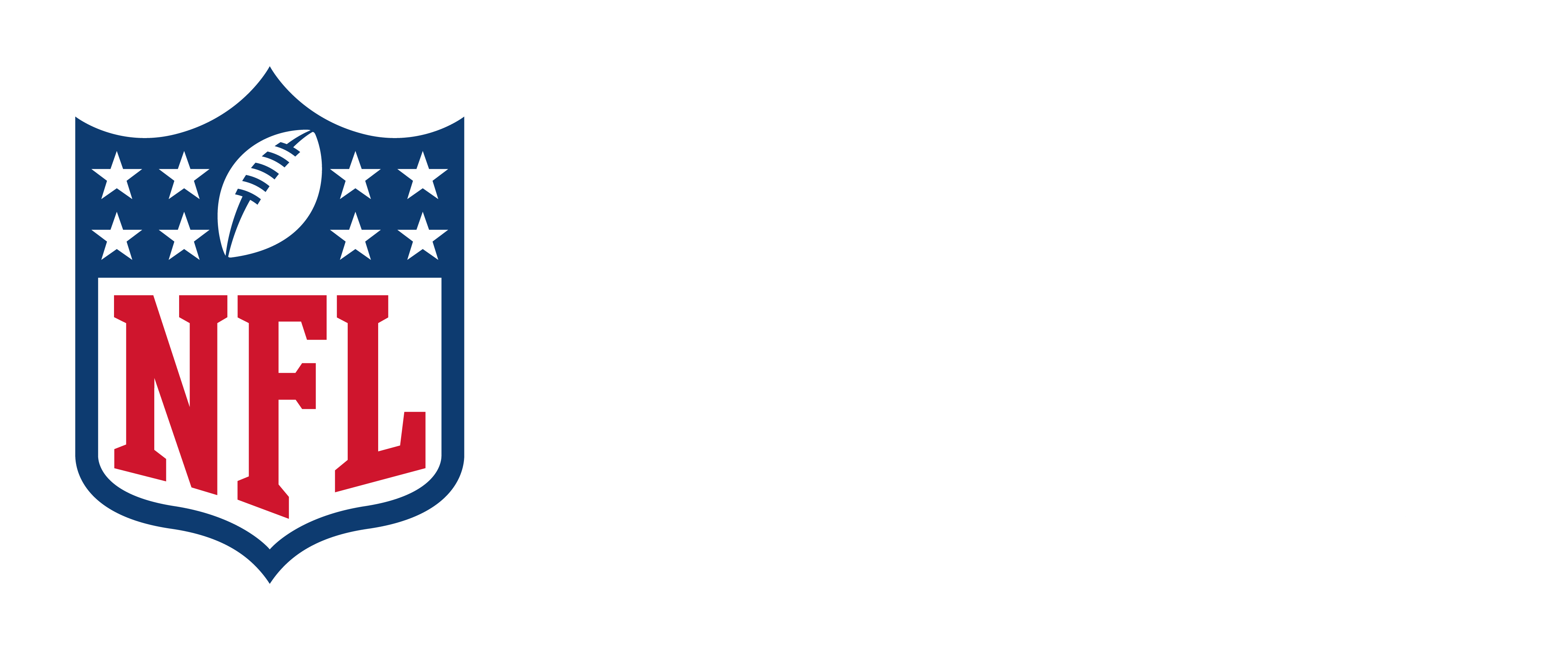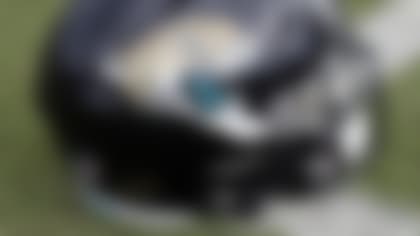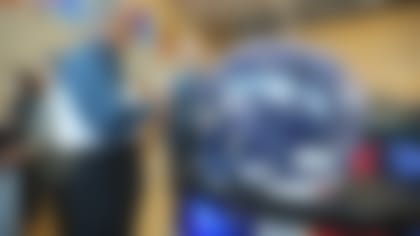Today's football helmets are products of engineering and design that can take years to innovate, test, optimize and manufacture. The NFL Helmet Challenge aims to dramatically accelerate that timeline.
The NFL Helmet Challenge is the league's most ambitious crowdsourcing competition yet, bringing millions of dollars and the league's data and resources to bear to stimulate experts, innovators and helmet manufacturers to develop a revolutionary new football helmet that performs better than anything currently worn in the NFL.
To encourage broad participation in the Helmet Challenge, the NFL recently awarded more than $1 million in HeadHealthTECH grant funding to support four teams of innovators in the design and development of their helmet prototypes for submission to the Helmet Challenge.
The awardees – Impressio, Inc./CU Denver, Xenith Project Orbit, the Kollide consortium and UVA/Nama Development/Topologica, Inc. – each pull together the wide breadth of expertise from biomechanical engineering to materials science to additive manufacturing needed to tackle this challenge.
Grant winners and other Helmet Challenge applicants now have until July 2021 to submit their helmet prototypes for the same lab testing that the NFL-NFLPA use to rank helmets each year.
Meet the teams with grant funding in hand who are now vying for the $1 million prize – may the best helmet win.
Impressio, Inc. and CU DenverÂ
Impressio Founder and CTO Chris Yakacki has been here before. This is his third innovation grant through the NFL.
"We learned a lot through the grant programs. We learned a lot about our material and helmet markets. But we also learned what was not going to work," said Yakacki.
One of the most important lessons he learned was the need to look beyond just safety when designing for athletes and taking factors like fit and comfort into consideration.
"If a helmet doesn't fit right, it's not going to perform right – and you're not going to want to wear it," he said.
Yakacki's solution is a custom-fit helmet lined with Impressio's ultra-dissipative liquid-crystal elastomer (LCEs) material, which Yakacki calls "the anti-flubber" – a rubber that doesn't bounce.
"We condensed our material into an energy-absorbing pillar and surrounded it with a 3D printed lattice," he said. "To me, this solves a lot of problems – you can print the lattice to fit someone's head perfectly and the lattice holds the pillar in place to absorb the energy."
Impressio's Helmet Challenge work is supported by partners including CU Denver, EOS, nTopology, and Schutt. Yakacki emphasized that bringing together those various areas of expertise will accelerate how solutions are developed and approached.
"[Our team] has all the capabilities to approach this problem from all areas. You need to know how to 3D print as well as design for 3D printing. You need a new energy-absorbing material. You need to know how to simulate helmet impacts and perform experiments to the test standards. We can check all those boxes," he said.
Xenith Project Orbit
Xenith, an industry staple in football equipment, is working to create a new solution for energy control and a best-in-class on-field experience for the athlete.
"Our philosophy is athlete-centric," said Grant C. Goulet, PhD, Vice President of Product Innovation at Xenith. "Yes, we want to develop a helmet that optimally controls impact, but we also want to make sure the athlete feels that they can perform at their best when wearing this helmet."
Dr. Goulet's team brings together experts in injury biomechanics, additive manufacturing, material science, design and computational modeling – BASF, RHEON Labs and The University of Waterloo – to develop a layered helmet system that effectively controls energy.
"RHEON has developed an incredibly unique material that is soft in its natural state but intelligently strengthens when it's compressed or sheared based on the speed of an impact," said Dr. Goulet.
"We're taking that technology and combining it with The University of Waterloo's expertise in computational modeling to simulate and digitally iterate on an optimal configuration of RHEON technology around the head," he said.
"Where BASF comes in is a next-to-head layer, which will be a custom fit 3D printed layer that can easily be incorporated into the rest of the helmet system – which keeps the mass-produced components at low cost while still allowing us to create a custom product."
Innovation is top of mind, but Dr. Goulet's team is committed to a long-term vision with broad applications for their technology.
"Although initially designed and engineered for NFL athletes, it's important to us that this helmet innovation have a positive impact across all levels of play," said Dr. Goulet.
Kollide
Eric Wagnac, professor at École de technologie supérieure (ÉTS), and Franck Le Naveaux, coordinator of the project (Kollide), aren't trying to reinvent the wheel. The Kollide-ÉTS team is focused on improving innovation for different aspects of the helmet.
"It's difficult for one company to have all the expertise needed to create a new helmet. We've gathered really high-end technology and expertise from each of our partners to create something great," said Wagnac.
The Kollide-ÉTS consortium combines the expertise of four innovative Montreal-based companies (Kupol, Tactix, ShapeShift3D and Numalogics) and academic researchers (ÉTS) to use virtual design, simulation and 3D printing to create custom-fit helmets that seek to absorb and redirect impact.
"The entire helmet is virtually designed and tested so that we can optimize and improve each component and make sure it performs for any impact direction," said Wagnac.
"The liner is made of a light and breathable lattice structure that we can fine-tune to behave differently depending on the direction of impact. We can also take a 3D scan of a player's head with a phone and design a helmet liner that fits perfectly, then quickly produce it with 3D printing," said Le Naveaux.
Wagnac and Le Naveaux are taking a Living Lab approach to their work, which puts the user at the center of every decision. They have consistently worked with players, sports physicians, equipment managers and neuropsychologists to develop a comprehensive understanding of what players want and need in a helmet.
"Of course, our goal is to develop the most protective helmet. But we also want to bring a cool and functional helmet to the field that players actually want to wear," said Le Naveaux.
UVA, Nama Development and Topologica, Inc.Â
Dr. Matthew Panzer, Associate Professor of Mechanical and Aerospace Engineering at the University of Virginia and the Deputy Director of the Center for Applied Biomechanics, has spent years working to understand injury biomechanics and concussion.
"A lot of our work is now being used in the NFL helmet assessments," said Dr. Panzer.
Dr. Panzer's team brings a unique knowledge of the ins and outs of helmet testing and a deep understanding of the biomechanics behind concussion to the Helmet Challenge. He is partnering with Dr. Haydn Wadley from UVA and Dr. Jonathan Berger from Nama Development— experts in the design and manufacturing of advanced metamaterials—to create a new energy absorbing layer in a football helmet that seeks to minimize the risk of concussion.
There are two major streams to this effort. The first is the heavy use of computer models to design and optimize the performance and safety of the helmet.
"We can run an entire NFL helmet evaluation protocol in a few hours and easily tweak the design – allowing us to improve and optimize the helmet before even building a prototype," said Dr. Panzer.
The second is their use of the innovative cubic + octet foam metamaterial design, Isomax™. Metamaterials combine high-performance constituent materials with mesoscale designs to achieve synergistic properties and performances not rivaled by any bulk material. Isomax™ has recently been identified as an optimal topology that provides extreme stiffness and strength, while being lightweight and easily manufacturable.
"Take a turtle shell. It's very organically designed and optimized in terms of performance versus weight," said Dr. Panzer. "That's similar to what we call metamaterials, which we are using to create a structure that fills the helmet – giving us the greatest amount of flexibility in terms of weight and performance."
Dr. Panzer is optimistic about the game-changing potential of the material.
"We can exceed the existing materials in helmets in multiple directions, multiple loading schemes. Overall, we think it will be the best performing material," he said.










